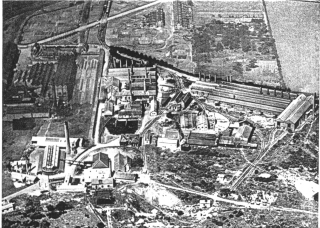|
|
 |
This history is taken from a draft history in my possession, along with extracts taken from: “A Saga
of British Industry – The Story of The British Plaster Board Group”
Compiled by John Routley Published by:
The British Plaster Board (Holdings) Limited,
London, 1959. It also contains further revisions of my own.
|
|
An aerial view of the Beacon Hill
works
|
|
Cafferata
and Company was founded in 1850 by William Cafferata.
Born in Liverpool, he was apprenticed in 1827 as a merchant to Thomas
Rodick for the sum of £5 in his first year. Later he started his career as
a book-keeper and is first mentioned in Gore's Directory of Liverpool
1839, as of Windsor Street,
Toxteth.
By 1845 he had moved with his family to Oxton Road, Birkenhead, no
doubt
commuting daily by ferry to Liverpool where he is recorded in Gore's
Directory
of 1847 as a stock and share broker with offices in Exchange Street East.
He
continued in business in Liverpool as a broker until 1862.
Having been successful in the Liverpool
stock exchange, William followed the practice
of his contemporaries and cast around for an industry to
invest in. His gaze fell on a small company near Newark, owned
by the Newark Plaster Company. In
January and June 1862, William purchased land
and buildings at Beacon Hill, including a
newly erected gypsum and plaster mill, gypsum mines and quarries.
This acquisition also included a brick works and, strangely
enough, a boiler works, which produced some Lancashire and
Cornish boilers. The last of these boilers known
to have been operating was one of a pair, scrapped in 1920, in the
Old
Mill at Cafferata’s plant at Newark.
The boiler works was subsequently
closed down.
Next
Page |